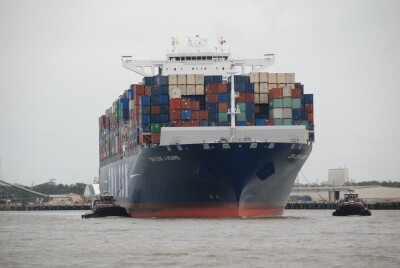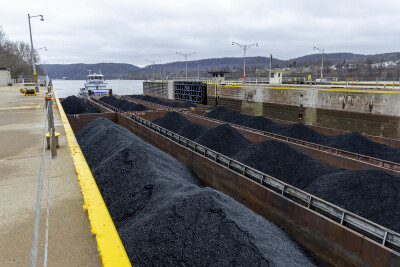In January of this year, the 83' sardine fishing vessel, Jacob Pike, sank in the New Meadows River, Harpswell, Maine. The vessel has been submerged for roughly seven months, and multiple agencies are now formulating a plan to have it removed.
The U.S. Coast Guard is coordinating with the Maine Department of Environmental Protections (DEP), NOAA, U.S. Fish and Wildlife Service, Maine Department of Marine Resources, Maine Department of Agriculture Conservation and Forestry (Bureau of Parks and Lands), and the Town of Harpswell, to develop a comprehensive plan to begin operations and safely remove the Jacob Pike.
The wooden fishing vessel was built in 1949 and spent most of its life as a commercial fishing vessel in the Maine sardine fishery. The Jacob Pike was at one point anchored in Rockport Harbor before being moved to Harpswell. According to a 2019 Boothbay Register article, a different future was anticipated for the historic vessel with hopes of a rebuild. The 83-foot boat is no longer an active commercial fishing vessel, had expired certificates, and was uninsured at the time of the sinking. According to an Island Journal article, the Penobscot Marine Museum bought the boat in 2007 with the intention of rebuilding and creating a floating museum. However, the funding for this project was never secured.
“The boat sank in January, and it’s been polluting the New Meadows River ever since,” U.S. Coast Guard Lt. Pam Manns told WGME. The total amount of fuel on board at the time of the sinking is still unknown; however, the fuel tanks can hold up to 1000 gallons. Officials have stated that the Jacob Pike has been a pollution threat and mentioned that the owner, as the responsible party, has not taken appropriate action to mitigate the situation and the further threat of pollution.
The Coast Guard Sector Northern New England Pollution Response Team observed significant oil sheening around the vessel and issued a Notice of Federal Interest and multiple Administrative Orders directing the owner to take appropriate action to address the pollution. When the owner made it clear that they were unwilling and unable to take appropriate action, the Coast Guard issued a Notice of Federal Assumption and took control of the response.
The federal agency hired pollution removal contractors who then placed a floating oil boom around the vessel to contain the oil spread. They then pumped 400 gallons of oil and water mixture out of the contained area and vessel and removed eleven marine batteries. There was a risk of the diver becoming entangled within the vessel's interior, which prevented additional recovery efforts. However, the Jacob Pike has remained surrounded by the boom to prevent further pollution.
“For the Coast Guard to not only assume control but do all the salvage and then take care of the disposal isn’t something that we do regularly,” Manns told WGME. “Our plan is to use airbags that attach to the side of the vessel, fill those with air, and then lift it.”
The owner of the 83-foot vessel has been charged with abandoning a watercraft but still did not plead guilty earlier in the year. The Coast Guard said they had assessed the Federal Oil Spill Liability Trust Fund (OSLTF) to respond to the discharge. OSLTF is a multi-billion-dollar funding source that pays removal costs and damage resulting from oil spills or substantial threats of oil spills to navigable waters within the U.S. The owner will later be billed for all federal response costs, including all costs paid from the OSLTF and all fees incurred by the agencies.


.png.medium-cropped.850x450.png.medium-cropped.800x500.png)


